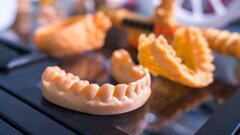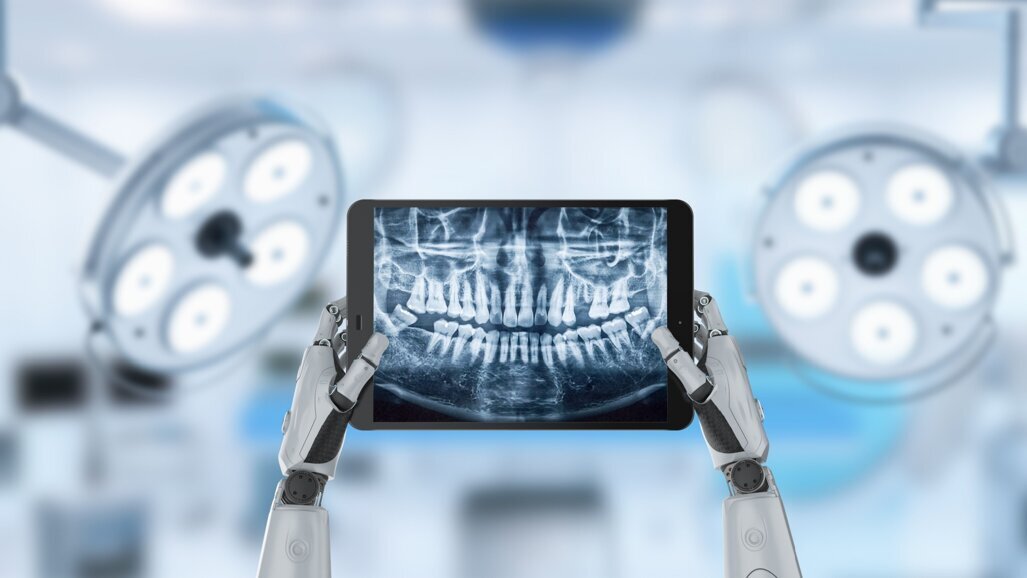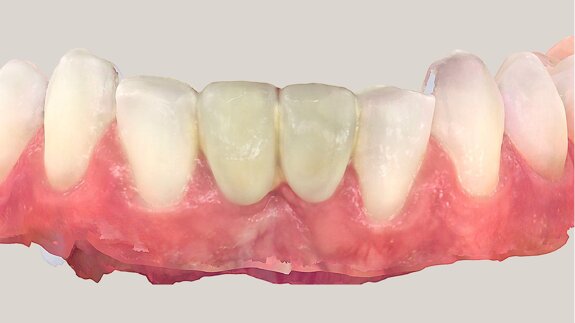CAMBRIDGE, Mass., US: In yet another milestone for the advance of artificial intelligence (AI) in the dental industry, the ADA Forsyth Institute recently announced that it has been awarded US$6.2 million (€5.6 million*) in federal funding to create dental composites with self-healing and antimicrobial properties. Awarded by the National Institute of Dental and Craniofacial Research, the five-year grant is set to open up highly significant advances in dentistry.
The Massachusetts-based centre is an established pioneer within the field of dental and craniofacial research. The project that the funding will support is aimed at developing restorative material that can—astonishingly—repair itself. This advanced and eminently practicable quality will derive from the use of nano-fillers that respond to biological signals, allowing them to efficiently adapt to patients’ specific oral conditions.
Speaking in a press release by the institute, Dr Jirun Sun, the lead investigator on the project, explained the magnitude of the research: “Imagine you have a crack developing in the filling. The material will detect that change and repair the crack. Or if your mouth has a lot of acid that lowers the pH, which is known to break down traditional composites and tooth structure, the material will counteract the acid.”
The team of researchers, coming from various disciplines, will combine experimental work with a physics-based testing model and data-driven simulations to design and evaluate these complex, dynamic materials. In collaboration with digital engineering company Optimuos, the institute will develop an AI-powered solution for this project.
“Without this approach, the number of parameters that we must test would have taken decades to complete,” said Dr Sun. “Incorporating [AI] and virtual lab simulations into the physical material development process, based on well-defined laws of physics and chemistry, will accelerate our goal of transforming personalised dental care.”
The work not only marks an important technological advancement but is also noteworthy for seeking to contribute towards the industry’s move away from the use of amalgam. As reported on by Dental Tribune International earlier this year, the European Parliament voted in January to ban amalgam outright from 1 January 2025, owing to potential environmental and physical health concerns regarding its mercury content.
Editorial note:
* Calculated on the OANDA platform for 30 September 2024.
Topics:
Tags:
MUNICH, Germany: Molar incisor hypomineralisation (MIH) constitutes a global oral health issue, affecting around 14% of the world’s population. Like with ...
MADRID, Spain: Although the popularity of social media use in healthcare for health promotion, research, recruitment and marketing is increasing, there is ...
Achieving a consensus regarding the future of artificial intelligence (AI) in dentistry is proving to be difficult if not impossible. When it comes to the ...
SELANGOR, Malaysia: The dental industry is evolving with artificial intelligence (AI), and AGATA AI is leading the charge. After its successful debut at ...
Live webinar
Mon. 12 January 2026
9:00 am EST (New York)
Prof. Judith Jones D.D.S; M.P.H., Prof. Kakuhiro Fukai D.D.S., Ph.D, Dr. Bathsheba (Bethy) Turton
Live webinar
Wed. 14 January 2026
12:00 pm EST (New York)
Dr. Théo Laplane, Dr. Robert Gottlander DDS
Live webinar
Fri. 16 January 2026
12:00 pm EST (New York)
Live webinar
Mon. 19 January 2026
1:00 pm EST (New York)
Philipp Kopp, Michael Seeber
Live webinar
Thu. 22 January 2026
2:00 pm EST (New York)
Dr. Nicola M. Grande DDS, PhD
Live webinar
Wed. 28 January 2026
8:00 am EST (New York)
Live webinar
Wed. 28 January 2026
11:00 am EST (New York)
Prof. Dr. Jan-Frederik Güth



 Austria / Österreich
Austria / Österreich
 Bosnia and Herzegovina / Босна и Херцеговина
Bosnia and Herzegovina / Босна и Херцеговина
 Bulgaria / България
Bulgaria / България
 Croatia / Hrvatska
Croatia / Hrvatska
 Czech Republic & Slovakia / Česká republika & Slovensko
Czech Republic & Slovakia / Česká republika & Slovensko
 France / France
France / France
 Germany / Deutschland
Germany / Deutschland
 Greece / ΕΛΛΑΔΑ
Greece / ΕΛΛΑΔΑ
 Hungary / Hungary
Hungary / Hungary
 Italy / Italia
Italy / Italia
 Netherlands / Nederland
Netherlands / Nederland
 Nordic / Nordic
Nordic / Nordic
 Poland / Polska
Poland / Polska
 Portugal / Portugal
Portugal / Portugal
 Romania & Moldova / România & Moldova
Romania & Moldova / România & Moldova
 Slovenia / Slovenija
Slovenia / Slovenija
 Serbia & Montenegro / Србија и Црна Гора
Serbia & Montenegro / Србија и Црна Гора
 Spain / España
Spain / España
 Switzerland / Schweiz
Switzerland / Schweiz
 Turkey / Türkiye
Turkey / Türkiye
 UK & Ireland / UK & Ireland
UK & Ireland / UK & Ireland
 Brazil / Brasil
Brazil / Brasil
 Canada / Canada
Canada / Canada
 Latin America / Latinoamérica
Latin America / Latinoamérica
 USA / USA
USA / USA
 China / 中国
China / 中国
 India / भारत गणराज्य
India / भारत गणराज्य
 Pakistan / Pākistān
Pakistan / Pākistān
 Vietnam / Việt Nam
Vietnam / Việt Nam
 ASEAN / ASEAN
ASEAN / ASEAN
 Israel / מְדִינַת יִשְׂרָאֵל
Israel / מְדִינַת יִשְׂרָאֵל
 Algeria, Morocco & Tunisia / الجزائر والمغرب وتونس
Algeria, Morocco & Tunisia / الجزائر والمغرب وتونس
 Middle East / Middle East
Middle East / Middle East










































To post a reply please login or register